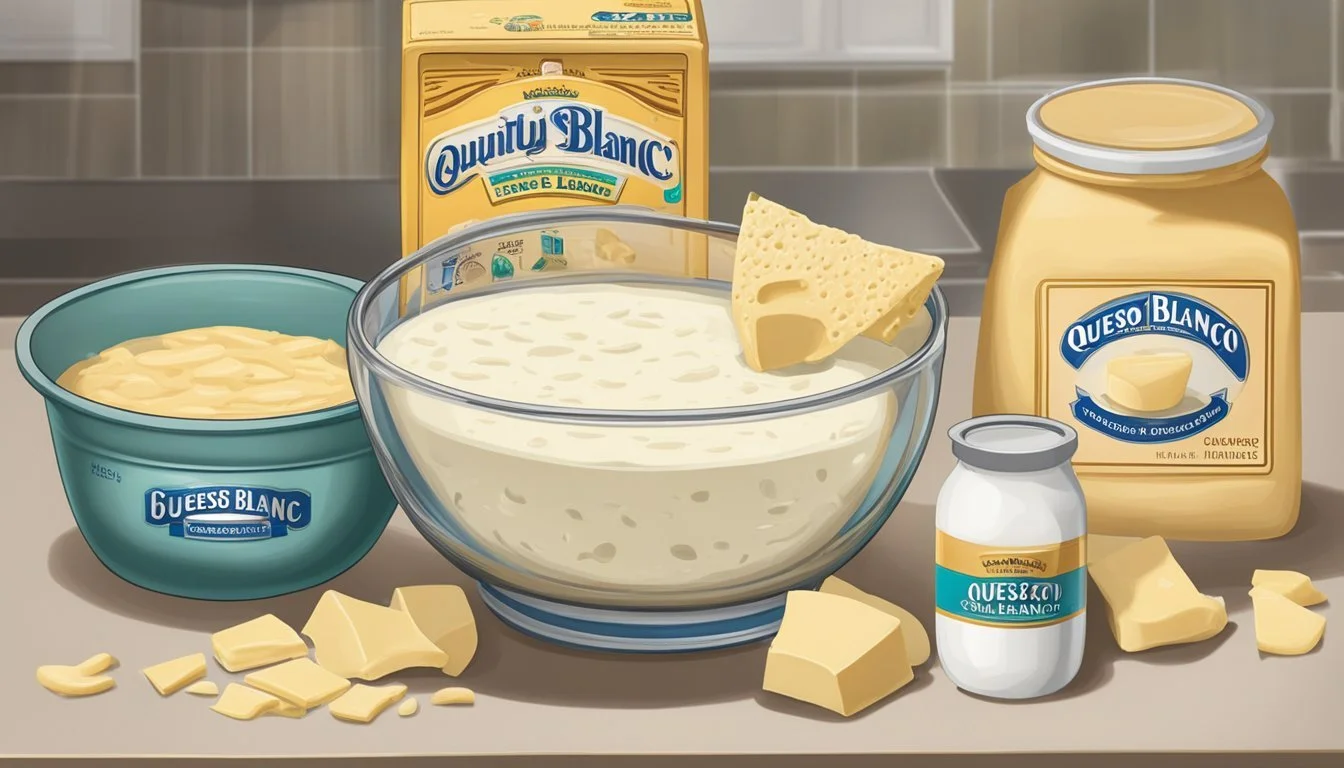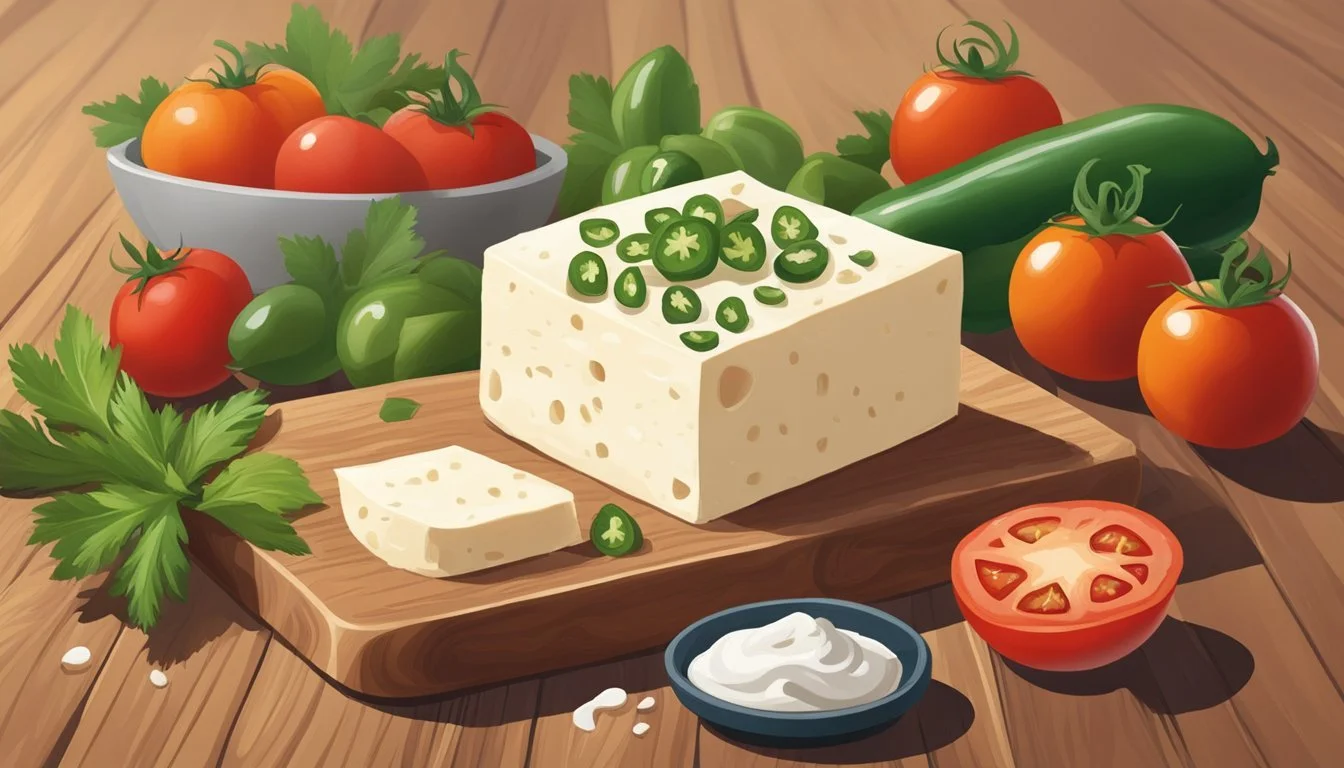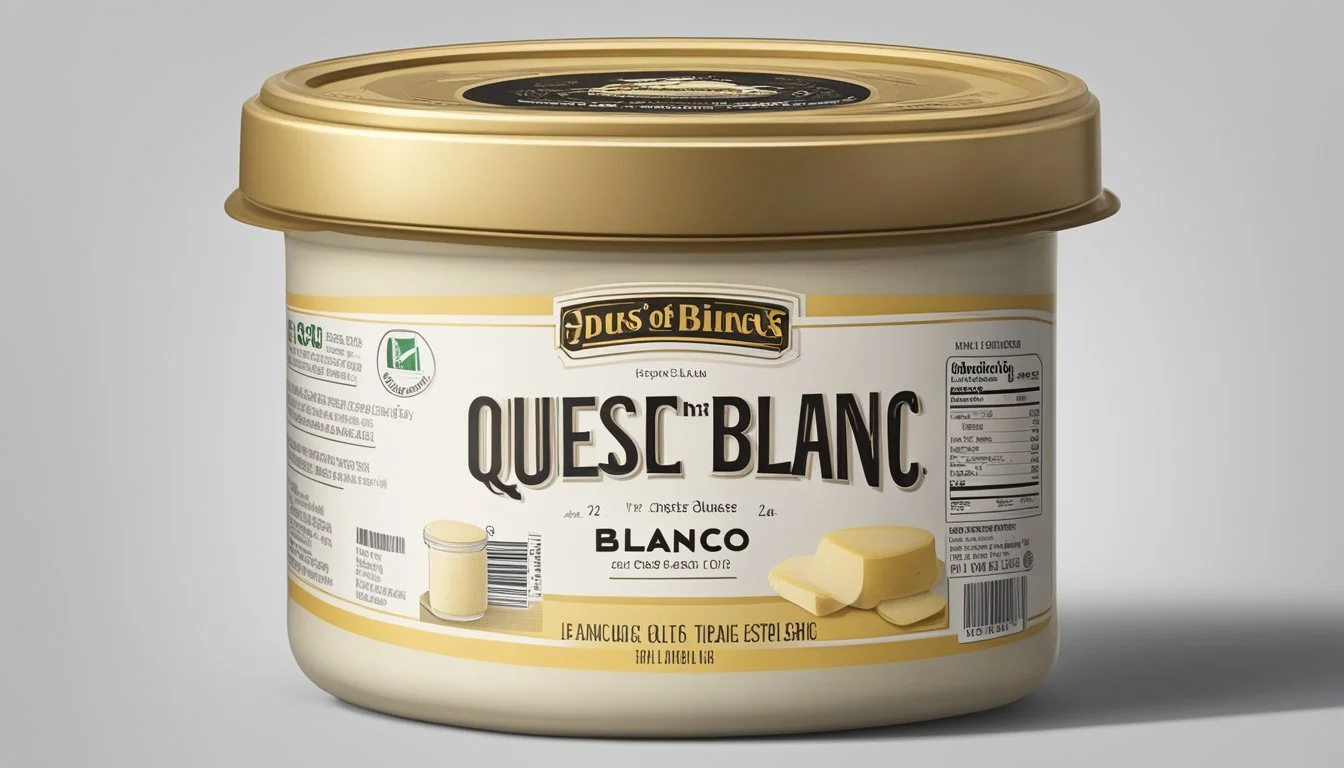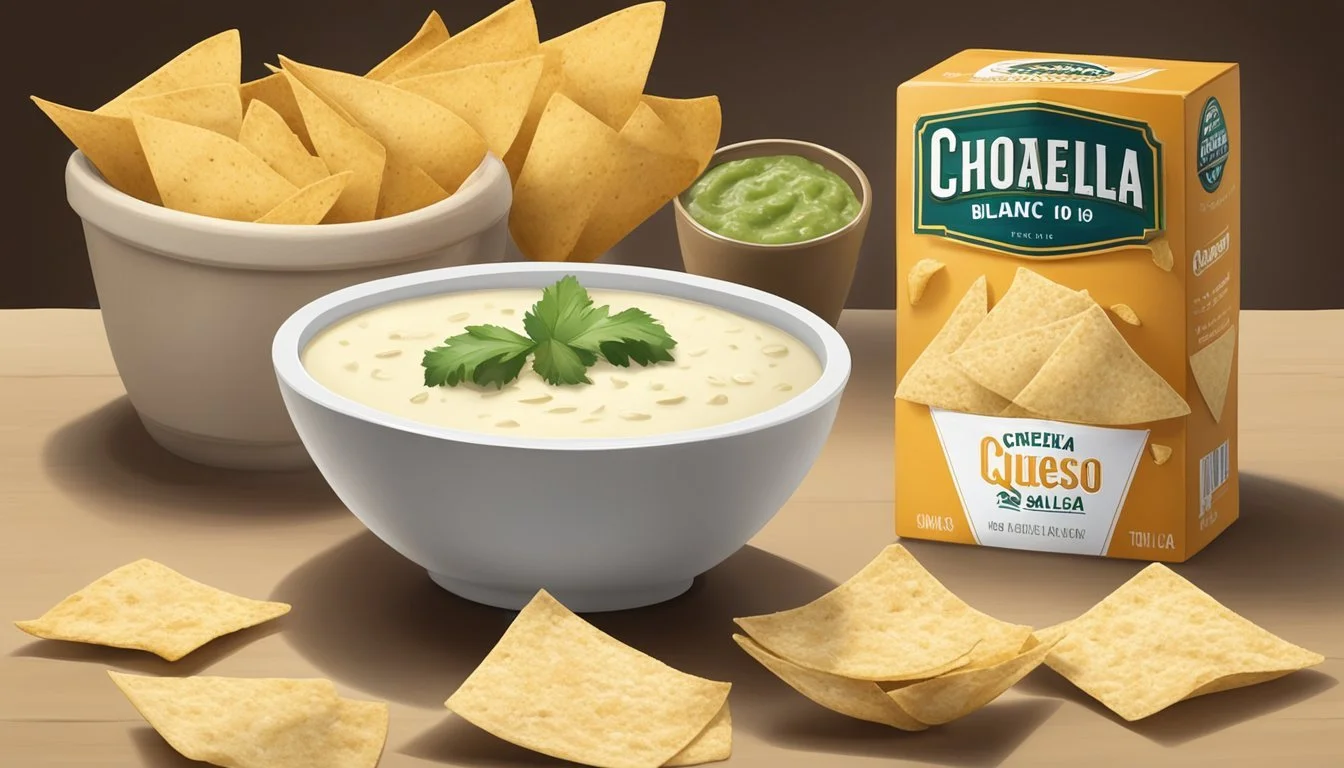Does Queso Blanco Go Bad?
Shelf Life and Storage Tips
Queso blanco, a popular and versatile cheese, is beloved for its mild flavor and smooth texture. Queso blanco can go bad if not stored properly. When left at room temperature, bacteria will start to grow within 2 hours, causing it to spoil and develop an off smell.
Refrigeration is key to extending the shelf life of queso blanco. In the fridge, it can last for up to two weeks if it's tightly wrapped or stored in an airtight container. Consumers should always check for signs of spoilage, such as mold or a sour odor, before consuming.
Proper handling and storage are crucial to keeping queso blanco fresh. By following these guidelines, one can enjoy this delicious cheese safely and at its best quality.
Understanding Queso Blanco
Queso Blanco, a versatile cheese, originates from Latin American cultures and offers various nutritional benefits. It is noteworthy for its simplicity in preparation and distinctive flavor profile.
Origins and Varieties
Queso Blanco, also known as "white cheese," has roots in Mexican and other Latin American cuisines. Historically, this fresh cheese is made from raw cow’s milk or goat’s milk. Its production involves acid curdling, typically using apple cider vinegar or lemon juice, rather than rennet. This method makes it accessible for home preparation. Numerous variations exist across different regions, tweaking factors like milk type and acidic curdling agents to produce unique textures and flavors.
Characteristics of Fresh Cheese
Queso Blanco is distinguished by its white color and soft, crumbly texture. It's a fresh cheese, meaning it's consumed shortly after production, which contributes to its tangy and milky flavor. It does not melt in the same way as cheeses like cheddar; instead, it softens but maintains its shape when heated. This quality makes it ideal for frying or adding to hot dishes without losing its integrity.
Nutritional Profile
A typical serving of Queso Blanco, approximately 118 grams, contains around 366 calories. It offers a significant amount of protein (24 grams), supporting muscle repair and growth. The cheese is also high in fat (29 grams), primarily from whole milk, which includes saturated fats. Carbohydrates are minimal, at 3 grams per serving. This macronutrient distribution makes it an energy-dense food, suitable for those looking to increase their caloric intake, particularly within balanced diets.
Storage Techniques for Queso Blanco
Proper storage of queso blanco is essential to maintaining its freshness and preventing spoilage. The following techniques cover refrigeration, freezing, and container options to ensure your queso blanco stays safe and delicious.
Refrigeration Practices
Refrigeration is crucial for extending the shelf life of queso blanco. Homemade queso should be cooled to room temperature before being refrigerated. Once cooled, transfer it to an airtight container.
For maximum freshness, set your refrigerator to 40°F (4°C) or lower. Store-bought queso typically lasts longer than homemade, averaging up to two weeks. Homemade queso blanco, without preservatives, lasts around 3-5 days in the fridge.
When refrigerating queso blanco, avoid placing it near the door, where temperatures fluctuate. Keep it in the main compartment.
Freezing and Thawing Procedures
Queso blanco can also be frozen for longer storage. To freeze, place the cooled cheese in a vacuum-sealed or heavy-duty freezer bag. Remove as much air as possible to prevent freezer burn. Label the bag with the date to monitor storage time, as frozen queso blanco is best used within 2-3 months.
Thaw frozen queso blanco in the refrigerator overnight. Avoid thawing at room temperature to prevent bacteria growth. Once thawed, reheat gently on the stovetop or in the microwave, and avoid boiling to maintain texture.
Airtight Containers vs. Plastic Wrap
Using airtight containers is ideal for storing queso blanco. These containers help limit exposure to air and moisture, which are primary contributors to spoilage. Glass or BPA-free plastic containers with sealing lids work best.
Plastic wrap is a less effective alternative for short-term storage. If using plastic wrap, ensure the queso is tightly wrapped without air pockets. For additional protection, wrap the queso first, then place it inside a resealable plastic bag. This method is not as effective as airtight containers and is recommended only for short-term storage.
By following these tips, you can maximize the shelf life of your queso blanco and maintain its quality. Proper storage involves controlling humidity and temperature, making proper container choice essential.
Expiration and Shelf Life
Understanding the shelf life and expiration dates of queso blanco is crucial to ensure it remains safe and enjoyable to consume. Factors such as packaging, preservatives, and signs of spoilage all play significant roles.
Deciphering Expiration Dates
Queso blanco, whether homemade or store-bought, comes with expiration or "best before" dates. Store-bought queso typically has clear labeling due to regulatory standards. It's important to check these labels and adhere to the recommended dates.
Homemade queso blanco usually lasts up to 5 days in the refrigerator. Store-bought versions, containing preservatives, can extend their shelf life to 1-2 weeks. Paying attention to these dates helps prevent consuming spoilage-prone cheese.
Signs of Spoilage
Identifying spoilage in queso blanco involves observing several key indicators. Spoiled queso often emits a rancid, sour, or ammonia-like smell. This is a definitive sign that the cheese is no longer safe to consume.
Other visible signs include mold growth, discoloration, or changes in texture, such as becoming excessively hard or slimy. Consuming spoiled queso can lead to food poisoning. Thus, it's crucial to discard cheese exhibiting any of these signs.
Impact of Preservatives on Freshness
Preservatives are commonly added to store-bought queso blanco to extend its shelf life. Ingredients like vegetable oil, canola oil, or other preservatives help maintain the cheese's freshness by slowing down bacterial growth.
These additives enable store-bought queso to stay fresh longer, sometimes up to 2-3 weeks when properly refrigerated. While preservatives extend shelf life, they do not eliminate the need for regular checks for spoilage signs. Proper storage in airtight containers further aids in maintaining queso blanco’s quality.
Safe Consumption Practices
Ensuring the safe consumption of queso blanco involves recognizing signs of spoilage and adhering to proper food safety and handling guidelines. By monitoring taste, texture, and other indicators, consumers can avoid potential foodborne illnesses.
Identifying Spoiled Queso Blanco
Texture and Flavor: Spoiled queso blanco can exhibit changes in texture and flavor. The cheese may become excessively soft, slimy, or develop a gritty texture. Its flavor might shift from mild and creamy to bitter or overly sour.
Smell: A sour or rancid smell akin to spoiled milk is a clear indicator of spoilage. This unpleasant odor often signals the growth of harmful bacteria.
Color and Mold: The appearance of mold, often blue or green spots, means the cheese should be discarded. Consuming moldy cheese can result in serious health issues. Additionally, any discoloration from its typical white should raise concerns.
Food Safety and Handling
Storage: Queso blanco should be stored in the refrigerator at temperatures below 40°F (4°C). Ensuring it is well-wrapped and kept in airtight containers can maintain its freshness for 1 to 2 weeks.
Handling: Always use clean utensils when cutting or serving queso blanco. Avoid cross-contamination by not using the same knife or cutting board for other foods, particularly raw meat, without thorough cleaning.
Shelf Life: Unopened, properly refrigerated queso blanco can last up to two weeks. Once opened, it is crucial to consume it within one week to ensure safety and quality.
Consumption: If there are any doubts about the queso blanco's safety based on its smell, appearance, or taste, it is best to err on the side of caution and discard it. Consuming spoiled cheese can lead to foodborne illnesses that cause symptoms like nausea, vomiting, and diarrhea.
Culinary Applications for Queso Blanco
Queso Blanco is a versatile cheese used widely in both traditional and modern dishes. This section explores its use in classic recipes and offers pairing suggestions to enhance its flavor.
Traditional and Modern Recipes
Queso Blanco is frequently used in Mexican cuisine. It serves as a topping for tacos, burritos, and enchiladas, adding a creamy texture without overpowering the dish. For a classic nachos recipe, sprinkle crumbled queso blanco over tortilla chips and bake until melted.
In modern culinary adaptations, Queso Blanco can replace feta or mozzarella in salads, bringing a subtle twist. It also melts well for a rich and smooth cheese dip, ideal for pairing with guacamole or salsa.
Pairings and Usage Ideas
Queso Blanco pairs splendidly with various flavors and ingredients. It works well with spices like cumin and chili powder, enhancing the overall savory profile of the dish. For snacks, combine queso blanco with monterey jack in a melted dip, perfect for tortilla chips.
In salads, blend it with fresh greens and vegetables for a light yet flavorful touch. Additionally, it complements dishes with monterey jack cheese or mozzarella, making it versatile in both Mexican and non-Mexican recipes.
The cheese is also great in burritos, offering a mild flavor that melds well with beans, rice, and meats, creating a balanced and satisfying meal.
Preservation Measures for Homemade Queso
To maintain the freshness of homemade queso blanco, proper storage techniques are essential. Awareness of common pitfalls can also help in prolonging its shelf life effectively.
Homemade Queso Blanco Tips
Proper storage starts with cooling queso to room temperature before refrigerating. Transfer the queso to an airtight container to minimize exposure to air, which can lead to spoilage.
For added preservation, using salt as a natural preservative can extend its life. Consider storing homemade queso fresco in containers that are just the right size to reduce air exposure.
Freezing queso fresco is another viable option. Place queso in a freezer-safe container and label it with the date to monitor its age. When freezing, account for any changes in texture that may occur upon thawing.
Common Mistakes to Avoid
Avoid storing homemade queso blanco in overly large containers, as this can expose it to excess air.
Do not leave homemade queso at room temperature for extended periods, as this speeds up spoilage. The optimal temperature for storage is below 40 degrees Fahrenheit (4 degrees Celsius).
Lastly, refrain from adding meat or high-moisture ingredients if you aim to store queso for a longer period, as these elements accelerate decay and reduce shelf life.
Comparing Queso Blanco to Other Cheeses
Queso Blanco offers a distinct texture and flavor profile that sets it apart from other cheeses. It also has unique shelf life characteristics that are crucial for consumers to understand when selecting cheeses for various purposes.
Texture and Flavor Contrasts
Queso Blanco is a fresh, white cheese that is softer and creamier than many aged cheeses. Its mild, slightly tangy flavor makes it versatile in many dishes. In contrast, Queso Fresco has a slightly firmer texture and can be more crumbly, with a tangier, saltier profile.
Monterey Jack is another popular cheese with a semi-soft texture and a more buttery, mild flavor. Processed cheeses, designed to melt easily, offer a smoother, more uniform texture but often lack the distinct flavors found in fresh cheeses. Feta, a brined curd cheese, is crumbly and tangy, offering a saltier bite. Chèvre, or goat cheese, has a distinct, earthy flavor and a soft, spreadable texture that is quite different from cow-milk cheeses.
Shelf Life Differences
Queso Blanco typically lasts about 2 to 3 weeks in the refrigerator, assuming it is stored properly. Queso Fresco has a slightly shorter shelf life, lasting 1 to 2 weeks. This is due to its fresh nature and lack of preservatives, which means it can spoil faster.
Monterey Jack and many processed cheeses have a longer shelf life, often extending several months, partly due to the use of preservatives. Feta, if stored in brine, can last for several weeks to months, while chèvre, depending on packaging and preservatives, generally lasts a couple of weeks once opened. These differences highlight the importance of storage and expected use timeline in selecting a cheese.
Common Questions About Queso Blanco
Queso Blanco's longevity depends on how it is stored and the specific type of cheese used. Different variations of queso blanco can have varying shelf lives based on their ingredients and preparation methods.
Handling Leftovers Effectively
Proper storage is crucial for maintaining the quality of leftover queso blanco. It should be stored in an airtight container and kept in the refrigerator. Generally, it can last for 3 to 4 days. For longer storage, freezing is an option. Be sure to label and date the container to keep track of its freshness. Do not leave queso blanco at room temperature for more than 2 hours to avoid bacterial growth.
Signs of spoilage include an off smell, discoloration, and mold. When in doubt, it's safer to discard it. It’s important not to mix leftovers with fresh queso blanco to prevent contamination.
Impact of Cheese Variations on Shelf Life
The type of cheese used in queso blanco significantly impacts its shelf life. Fresher cheeses like queso fresco typically have a shorter lifespan and should be consumed within a few days.
Aged varieties, such as queso añejo or cotija, have a drier texture and last longer. Ingredients like Monterey Jack and white cheddar, often found in commercial queso blanco, also contribute to a longer shelf life. Storing these types in optimal conditions can extend their usability.
Understanding these variations helps in planning usage and storage strategies for different queso blanco recipes.









